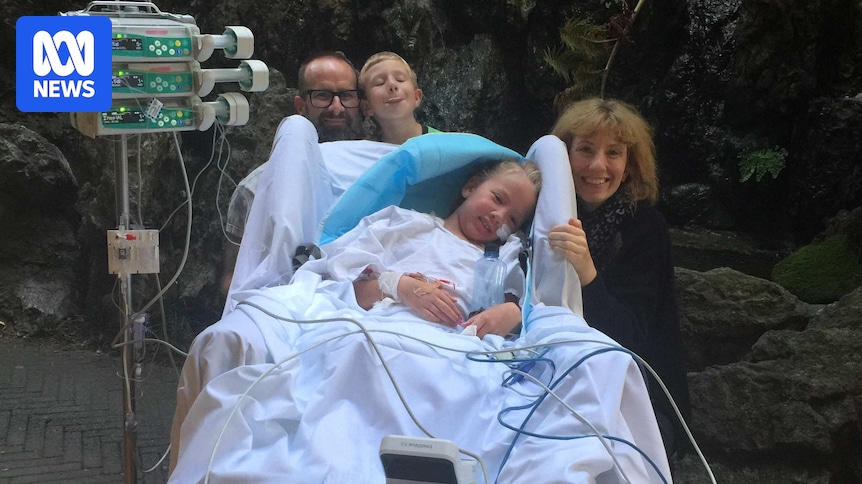
After missing her flu vaccine for just one year, Millie Campbell found herself fighting for her life. In 2019, the then-eight-year-old contracted influenza B, which began with aches and pains in her legs and escalated to multiple organ failure.
“They had to drain 200 millilitres of fluid from her heart — it was struggling,” her mother, Stephanie Campbell, recounted. “I think the doctor’s words were ‘your daughter could die tonight’.” Millie’s parents faced the terrifying prospect of losing her.
Millie was airlifted by rescue helicopter from Newcastle to Westmead Children’s Hospital in Sydney, where she soon went into cardiac arrest. “It was very, very surreal, it actually felt like at the time it wasn’t happening,” said Millie’s father, Ian Campbell. “There was no indication she was going to survive,” added Ms. Campbell.
Influenza B’s Rising Threat
This year, Australia has experienced a significant increase in influenza B cases, particularly among children aged five to 16, despite influenza A being the more prevalent virus type. Although both types present similarly, influenza B can be more severe in children. The influenza vaccine includes two strains of the A virus and two of the B.
“[Influenza B] often gets a reduced awareness compared to influenza A, probably because A is normally associated with pandemics,” explained Patrick Reading, director of the World Health Organization Collaborating Centre for Reference and Research on Influenza.
Children currently represent the highest proportion of influenza B cases in Australian hospitals. “It’s a bit of a mystery. It’s an association that we see, but we can’t say there’s something specific about the virus that means it infects more children over adults,” Professor Reading noted.
Declining Vaccination Rates
Flu vaccination rates have been declining since the COVID-19 pandemic, with the five to 16-year-old age group — the most affected by influenza B — showing the lowest uptake. “In 2022 we had high rates across all age groups, and now we have so many unvaccinated people, which means we have a larger cohort of people who are susceptible to infection,” Professor Reading said.
He warned that this fading immunity is putting significant pressure on the health system, and the worst might still be to come. “We see elevated [influenza] circulation throughout August, September and October, so it’s definitely not too late to get vaccinated,” he emphasized.
Vaccine Accessibility and Public Confusion
Millie’s parents had been diligent about vaccinations, but once she was over five, they believed she was at less risk. Influenza vaccines are free under the National Immunisation Program (NIP) for high-risk groups, including children aged six months to five years. Outside this age group, the vaccine costs around $25, becoming free again for those 65 and over.
Julie Leask, a social scientist specializing in vaccination, suggested that age restrictions might confuse some people. “I don’t think the risk-based strategy is working well for Australia,” she said. “When the vaccine is on the [NIP], it’s a real signal to people that this vaccine is important, and it’s also a signal to health professionals to recommend the vaccine.”
“I think the Australian government needs to consider whether we can make the flu vaccine free for everybody aged six months and over, because then it will become a bit more institutionalized into our systems and simple to communicate.” — Julie Leask
The Broader Impact of Misinformation
Research indicates several reasons for the decline in childhood vaccination rates, including lack of awareness, healthcare providers not recommending it, busy lifestyles, cost, and safety concerns. Additionally, anti-vaccine rhetoric, which has intensified since the Trump administration in the US, complicates the issue further.
Over the past six months, US health secretary and anti-vaccine activist Robert F. Kennedy Jr. has been spreading disproved myths about vaccines causing autism and has walked back COVID-19 vaccine recommendations for children and pregnant women. Professor Leask believes this messaging could influence attitudes in Australia.
“We are seeing from the US this kind of mainstreaming of misinformation … we will see the impacts of that to some degree in Australia,” she said.
Millie’s Journey to Recovery
Millie now uses a prosthetic left leg and has embraced swimming as a central part of her life. The now-14-year-old has become a competitive swimmer, winning multiple gold medals at national championships and qualifying for the recent World Trials in Adelaide. She aims to compete in the 2028 Paralympics in Los Angeles.
Her parents remain concerned about Australia’s changing attitude toward vaccination. “This growing hesitancy seems to be driven by the inability of people to decipher between evidence-based information and misinformation on social media,” Mr. Campbell stated.
“Vaccination benefits not only you but the community.” — Ian Campbell
As Millie’s story illustrates the severe impact of influenza B, her parents urge others to consult health experts and prioritize vaccinations to protect children and communities.







